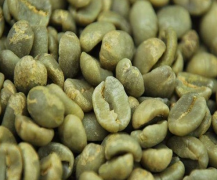Brazilian coffee beans production time introduction red bourbon coffee beans flavor aroma characteristics taste description
Summary: a country located in central South Africa and southwest Brazil.
Capital: Brasilia (Brasilia)
Language: Portuguese
Climate: tropical climate, temperate climate
Religion: Roman Catholic 73.6%, Protestant 15.4%
Exchange rate: 1BRL = 3.11 yuan
Population: about 191.91 million (2008)
Production area: Baiha,Parana,SaoPaulo,MinasGerais (Cerrado), RiodeJaneiro,EspirituSanto,Goias
Production variety: Typica,Bourbon,MundoNuevo,Catuai,Catttura,Catimor,Maragogype,Others
Harvest time: may ∼ August
Planting height: 800m ∼ 1200m
Grade: No2,No3
Processing method: Dry-Process,Wet-Process (dry method, wet method)
Brazil Santos NO.2 (BRAZIL SANTOS NO.2)
Because most traditional Brazilian coffee is processed by natural drying (coffee seeds: drying before the pulp is removed), the syrup in the pulp remains in the raw beans, so it has a sweet taste. Brazilian coffee processed in this way is the most common raw bean in boutique coffee stores. Coffee grown on an Arabica coffee tree called Bourbon is also common in Brazil. Among the coffee produced in this way, the best quality coffee is generally referred to as "Santos No.2 (SantosNo2)".
In addition, only those planted on coffee bourbon trees are called "bourbon Santos No.2 (BourbonSantosNo.2)". Santos comes from the name of the port that transports Brazilian coffee. "2" means the highest level of coffee quality. In wholesale circulation, generally remove "2", only known as "Brazil Santos" or "Brazil Bourbon Santos".
Fragrance characteristics:
Aroma | Flavor | Acidity | Sweetness | Body | Aftertaste
RoastingPoint:Light | Cinamon | Medium | High | City | Fullcity | French | Italian
Variety:Criolla
ProcessingMethod:Natural,Semi-Washed
Species:Arabica
Profile:sweetaroma,fruitnotes,cleancupandpleasantaftertaste
Brazil Yellow Bourbon | BRAZIL YELLOW BOURBON
Generally speaking, coffee fruit appears red when it is ripe. But the yellow bourbon coffee is yellow, which is the origin of the phrase "yellow (yellow)". Compared with other coffee trees, the production of yellow bourbon coffee tree is relatively low and its cultivation is very difficult. Yellow bourbon coffee beans appear bright yellow when they are fully ripe, and the processed roasted coffee beans are dry and sweet with a special nutty aroma (nutty).
The cultivated area is located about 1100 meters above sea level, with an annual precipitation of 1800 ∼ 2000 mm. This environment is an ideal condition for coffee cultivation in Brazil. Yellow bourbon is based on mucosal drying and semi-washing (PulpedNaturalMethod) processing. Although this method removes the pulp directly after the coffee bean is harvested, it retains the mucus that wraps the endocarp of raw beans to dry. As a result, coffee retains its dry aftertaste (cleanaftertastes), mild texture and sweet sour taste.
Fragrance characteristics:
Aroma | Flavor | Acidity | Sweetness | Body | AftertasteRoastingPoint:Light | Cinamon | Medium | High | City | Fullcity | French | Italian
Variety:Criolla
ProcessingMethod:Natural,Semi-Washed
Species:Arabica
Profile:sweetaroma,fruitnotes,cleancupandpleasantaftertaste
Features: SOFT,MILD,NUTTY (IMAGESINSERT)
Important Notice :
前街咖啡 FrontStreet Coffee has moved to new addredd:
FrontStreet Coffee Address: 315,Donghua East Road,GuangZhou
Tel:020 38364473
- Prev

Raminita La Minita coffee tasting
This is a world-famous manor known for its strict quality control and stable quality. we are very surprised that we can't find defective beans when we open them.
- Next

Introduction to the origin and taste of sixteen boutique coffees
1.RwandaKivu Rwanda-No introduction: Rwandan coffee beans were introduced to Rwanda by German missionaries in the 20th century. Because of Rwanda's superior climate and unique geographical environment, growing coffee beans has a unique fruity and grassy aroma. There are many planting bases in Rwanda, but the coffee beans produced without machines are even better, not only because of their own.
Related
- Guji coffee producing area of Guji, Ethiopia: Humbela, Shakiso, Wulaga
- What is the most expensive variety of Qiloso in BOP multi-variety group?
- How to store the coffee beans bought home?
- Why are Yemeni coffee beans so rare now?
- Ethiopian Sidamo all Red Fruit Sun Sun Santa Vini Coffee beans
- SOE is mostly sour? What does it mean? Is it a single bean? what's the difference between it and Italian blending?
- Is Italian coffee beans suitable for making hand-brewed coffee?
- How to choose coffee beans when making cold coffee? What kind of coffee beans are suitable for making cold coffee?
- Just entered the pit to make coffee, what kind of coffee beans should be chosen?
- Can only Japan buy real Blue Mountain Coffee? What are authentic Jamaican Blue Mountain coffee beans?

